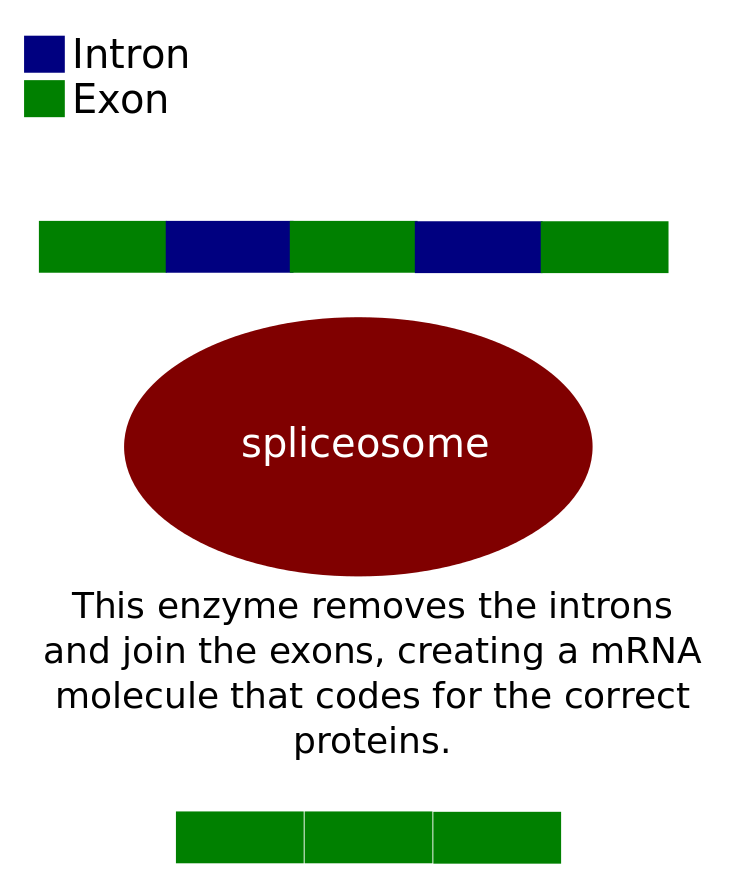Transcription Tutorial
The Central Dogma of Molecular Biology
- DNA replicates. (Replication)
- DNA codes for production of mRNA. (Transcription)
- mRNA migrates from nucleus to cytoplasm.
- mRNA carries coded information to ribosomes. Ribosomes create proteins. (Translation)
DNA vs. RNA
| DNA | RNA |
| Double Stranded | Single Stranded |
| Contains the bases: adenine and thymine, guanine and cytosine. | Contains the bases: adenine and uracil, guanine and cytosine. |
| Made with a deoxyribose sugar. | Made with a ribose sugar. |
Transcription:
The objective of transcription is to create mRNA (messenger RNA) from a strand of DNA.This process occurs in three essential stages.
- Initiation
- Elongation
- Termination
- Initiation
- The enzyme RNA polymerase binds to the promoter or the TATA box of the DNA and opens the double helix.
- It binds to the promoter as it contains many adenine and thymine bases. This is because these bases only have two hydrogen bonds which makes it easier for RNA polymerase to break the double helix and start the process.
- Elongation
- On the template strand of DNA, RNA polymerase builds mRNA in the 5' to 3' direction. The promoter is not transcribed.
- The unused strand of DNA is called the coding strand.
- Unlike DNA replication, no RNA primers are required to start the process.
- Termination
- At the end of the gene, there is a terminator sequence, in which the RNA polymerase recognizes.
- When encountered, the primary transcript of mRNA is removed from the template strand.
- The process is then repeated when the RNA polymerase binds to another promotor and begins transcribing another gene.
Note: No proofreading is done, due to the redundancy found in the genetic code and the large scale of production of mRNA.
A 5' cap, which is made out of a modified guanine nucleoside triphosphate, is added to protect the mRNA from being digested by enzymes. The 5' cap also exists to tell ribosomes to begin translation.
A 3' poly-A-tail, which is, you guessed it, a tail of many (200 to be exact) adenine nucleotides. It exists to protect the mRNA from degeneration. It is added by poly-A-polymerase.
 In addition, genes contain two components, exons and introns.
In addition, genes contain two components, exons and introns. Exons are the coding regions of the gene, the part of the gene that is translated to a protein.
Introns are the non-coding regions of the gene, if they are translated, you would create a protein that will fold incorrectly and not be able to carry out it's proper function.
Before leaving the nucleus, introns are removed by a molecule made of RNA and proteins called a, spliceosome.

You are now left with a strand of mRNA, called a mRNA transcript. It can now leave the nucleus and enter the cytoplasm.